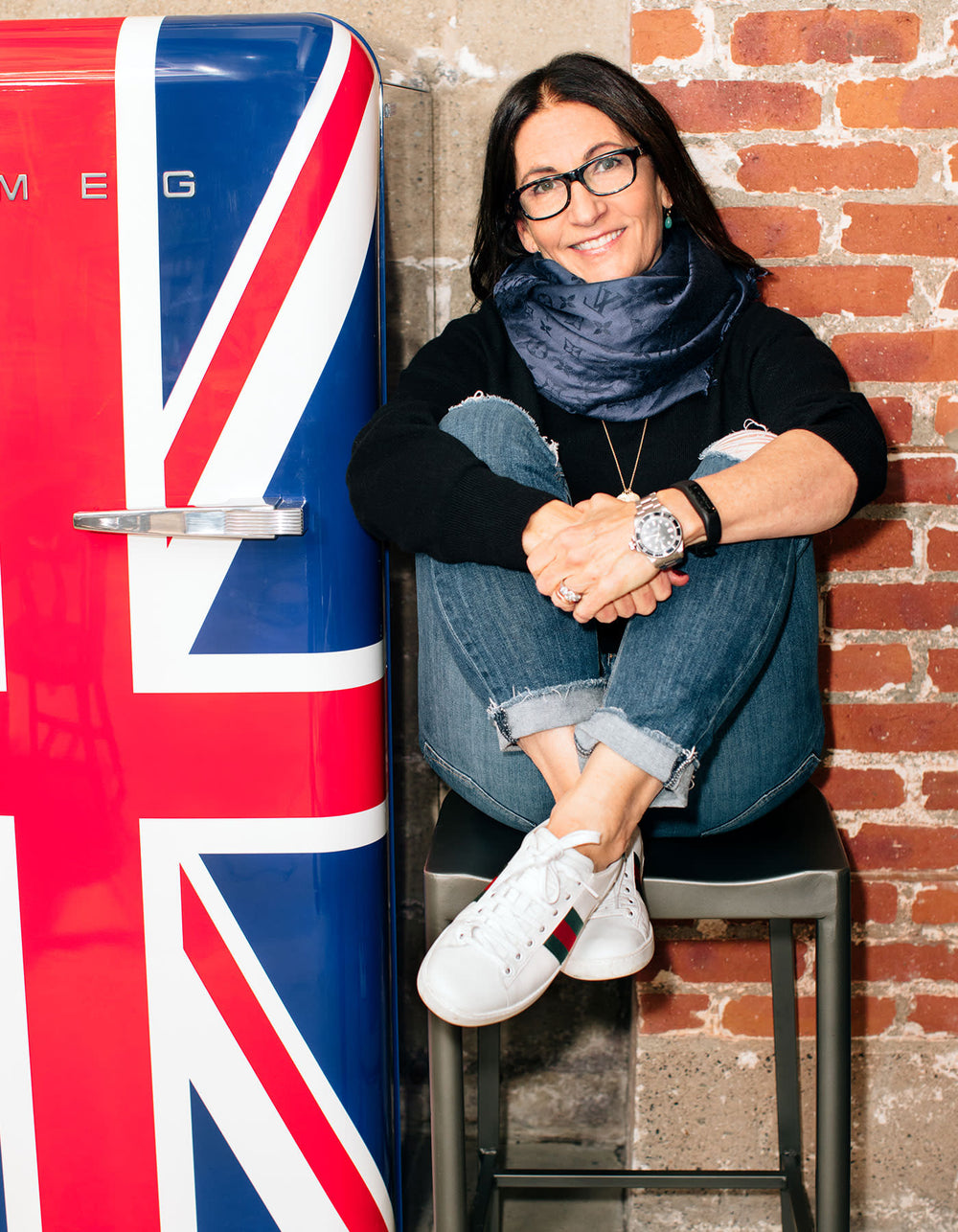Diary / Beauty / Mar 21, 2023
How Often Should You Be Moisturizing Your Face?
Written by: Piper Gray
Photography by: Ben Ritter & Jon Paterson
How Often Should You Be Moisturizing Your Face?
It’s not news that you should be moisturizing your face. Consistently staying moisturized as part of your daily routine pays off for a few reasons: moisturized skin creates a smooth palette for your makeup, is less likely to experience dryness or dullness, and avoids tightness or discomfort. But how often should you be moisturizing your face, and with what? We’re here to help you figure out how to best care for your skin, no matter your skin type.
Why It’s Important To Keep Your Face Moisturized
Even if you take good care of your skin and already have an easy-to-follow routine in place, there are a lot of factors that can easily and unintentionally compromise your skin’s natural barriers and lead to uncomfortable problems. Everything from overuse of exfoliants, too-harsh cleansers, sun damage, and variations in weather can affect how moisturized your face stays.
Anyone who’s experienced dry skin knows its pitfalls—redness, flakiness, tightness. Not only can these be uncomfortable, but they can be annoyingly hard to hide. Or if you deal with oily skin, you have different but just as irritating concerns: you may be prone to blemishes, and it may feel like your makeup simply sits on top of your face, making it look unnatural.
It’s also important to stay moisturized, even if you don’t have any of those concerns, because it helps prevent the overproduction of oil (which sometimes happens if your skin is actually dry—even if that seems counterintuitive). We believe moisturizing should be part of both your morning and evening routines, but of course, if you’re dealing with major concerns, it’s always best to consult your dermatologist.
Below, you’ll find suggestions on how to find the best products for your skin type and other tips on how to put your best face forward.
How Many Times Should You Moisturize Your Face Each Day?
First things first, you should be moisturizing every day, even if you have oily skin. Sometimes oily skin comes from the overproduction of oil in response to dry skin, so creating a moisturizing routine might actually help balance the production of oil. And we recommend applying the moisturizer of your choice to clean skin twice a day, in the morning and at night, to ensure that your face enjoys a consistent application around the clock.
Moisturize Based on Your Skin Type
Everyone’s skin is different, thanks to genetics, the environment, hormones, even the weather and seasons. And your own skin might vary, due to any or all of these factors, throughout the month or year. Once you’ve determined your skin type—and you probably have a pretty good sense of this already—you’ll be able to support your skin best, and understand if and when you need to apply a little extra moisture. (And once you have the moisturizing basics covered, read up on how to find the makeup products that’ll become part of your Jones Beauty routine.)

For Dry Skin
As anyone who has suffered the discomfort of dry skin knows, a heavy cream or lotion, even a balm, is packed with the barrier-repairing ingredients and moisturizing capabilities to help the most dehydrated skin. (We’ll get into the specifics of what creams, lotions, and balms offer in a bit.) For some extra guidance, read our step-by-step explanation of all things related to dry skin.
For Oily and Acne-Prone Skin
If you’re prone to blemishes, the last thing you need is anything too heavy. Not only could a thicker consistency clog your pores and lead to more breakouts, but it’s likely to just sit on your skin and make you feel greasier. Consider a moisturizer like a gel or a lightweight lotion instead.
For Combination Skin
With combination skin, you’re not tethered to any one specific type of moisturizer. Since you experience both oily and dry skin, you may want to try out a few and see which formulation and ingredients provide the best protection and comfort.
For Sensitive Skin
“Sensitive” can mean your skin appears red easily, among other things, and this is likely accompanied by dryness. Finding the best moisturizer, and determining how often to apply it, to soothe your concerns may take a little experimentation and patience. Look for products that are specifically formulated for sensitive skin because they’ve been developed without harsh chemicals that often cause reactions.
For Normal Skin
Those with normal skin don’t have to worry about specific skincare issues, so there are less hard-and-fast guidelines about what type of moisturizer to choose. In this case, play around and find whatever fits in with your routine and feels most comfortable.
What to Look for in Your Moisturizer
There are a few formulations of moisturizers out there, and they’re usually categorized by the type of ingredients found in each. Though you can probably picture the consistency of creams, balms, lotions, and gels, you may not be as familiar with what humectants, emollients, and occlusives are.
Humectants, Emollients, and Occlusives
These categories of moisturizers have to do with ingredients, not formulations. A humectant draws water in from the environment around it and can also bring up water from the deeper layers of your skin to help moisturize the top layer. These tend to be lightweight, so if you have oily skin that is prone to breakouts, start here.
Emollients soften up skin through the addition of oils and other heavy-hitting moisturizing components. Those with really dry or sensitive skin can benefit from the application of emollients, which can “patch” up areas where dehydrated skin is experiencing cracks and tears.
As for occlusives, these are perfect for those with super-dry skin. Occlusives describe ingredients that, in short, create a barrier, lock in existing moisture, and protect your skin from additional damage.
The more you read up on all the moisturizers out there, you’ll start to recognize that it’s possible for one product to contain some or all of these ingredients.

Creams, Balms, Lotions, and Gels
The formulation of moisturizer you should be looking for depends on your skin type. (And by formulation, we basically mean texture or how thick it is.) Not surprisingly, if your skin is on the dryer side, a thicker, heavier moisturizer, like a cream, might be suitable for you. Our Miracle Cream offers nourishing moisture that refreshes and plumps your skin. But creams aren’t always heavy; our Light Moisture Cream is actually gel-based (more on that in a bit).
Balms are also a good option for dry skin, especially if your face is chapped, flaking, or experiencing other flare-ups due to climate or other dermatological conditions. Balms are almost solid, and can sometimes take a little bit of warming up in your hands to apply because the water content is so minimal. A good option for a balm is our Hippie Stick, an on-the-go balm that glides on easily, and can be used anywhere and everywhere you need added moisture.
If you have combination skin—meaning you can experience both dryness and oiliness—a lotion is a good place to start. Lotions contain more water and, while they can be thick, they aren’t always as heavy as creams and balms.
And if you tend to experience oily skin, you’ll likely want the lightest option: a gel, which is water-based. Gels are short on emollients and occlusives but they’re full of humectants.
Other Ways to Keep Your Skin Moisturized
Applying moisturizer in the morning and night is step one to making sure your face is well-nourished, so it can, for one thing, act as the smoothest canvas possible for your makeup application. But there are a few other things you can do to make sure your skin stays soft and healthy throughout the day.
Don’t Forget the SPF
It can be tempting to skip the SPF in order to get a little sun on your face, or just because it feels like one more step to add to your routine. We don’t need to go into why that’s a bad idea—wrinkles, skin cancer, etc.—but too much sun time can also dry out your skin, leading to more immediate, visible “wear and tear.” Good news is, many moisturizers come equipped with SPF so you can more easily avoid extra sun damage in one simple step. (We’ve covered more of the ins and outs of sun damage and sun protection here, too.)
Drink Enough Water
If you’re dehydrated on the inside, it’s likely going to show on the outside in the form of dry skin that shows creases. Getting enough water is a surefire way to keep your skin feeling supple and soft.
Avoid Long Showers
Too-hot showers may be a comfort in the wintertime, but the longer you stay under the showerhead, the more your chances for dehydrated skin increase. Think about how red you look when you start toweling off; that temporary affliction can linger and create dryness and sensitivity that can become an issue if you repeatedly stay submerged too long.
The Short Answer
There is no one one-size-fits-all rule when it comes to how often you should be moisturizing your face. It depends on your skin type, if you have any specific concerns, and what kind of moisturizer you decide to use. But when it comes down to it, yes, you should definitely be moisturizing your face at least once a day. And beyond that, make sure to drink plenty of water, say “yes” to SPF, and “no” to long, hot showers.













































 Miracle Balm
Miracle Balm
 Just Enough Tinted Moisturizer
Just Enough Tinted Moisturizer
 What The Foundation
What The Foundation









